Transforming Remote Site Living: Lida Group’s High-Quality Mobile Building Units Offer Unmatched Comfort and Durability.
2025-Sep-05 11:57:15
By Admin
Introduction
Remote work sites—whether in mining, oil and gas, renewable energy, or infrastructure construction—have long been synonymous with harsh living conditions. For decades, workers deployed to these isolated locations have endured cramped, poorly insulated dormitories, inadequate hygiene facilities, and limited access to basic comforts. These subpar living arrangements not only harm worker morale and productivity but also increase turnover, raising costs for companies and delaying projects. Traditional solutions—permanent brick-and-mortar structures or low-quality prefabricated shacks—fail to address the unique challenges of remote sites: they are slow to build, difficult to relocate, and unable to withstand extreme weather.
Lida Group, a global leader in modular and mobile building solutions, is revolutionizing remote site living with its high-quality mobile building units. These units combine unmatched comfort—with thoughtful design, modern amenities, and climate control—with exceptional durability, engineered to thrive in the harshest environments. Unlike conventional accommodation, Lida’s mobile units are rapid to deploy, easy to relocate, and built to last, transforming remote living from a hardship into a sustainable, comfortable experience.
This article explores how Lida Group’s mobile building units are redefining remote site living. It examines the limitations of traditional remote accommodation, details the comfort-focused design and durability features of Lida’s units, highlights technological innovations, presents real-world case studies, and analyzes the company’s competitive edge. Finally, it concludes with insights into the future of remote site living and Lida’s role in shaping it.

The Plight of Traditional Remote Site Accommodation
To understand the transformative impact of Lida’s mobile units, it is essential to first confront the failures of traditional remote site accommodation. For companies operating in isolated regions, housing workers has long been a compromise between cost, speed, and quality—with workers bearing the brunt of these trade-offs.
Comfort: A Forgotten Priority
Traditional remote accommodation prioritizes functionality over comfort, leading to living conditions that erode well-being. Dormitories are often overcrowded, with 4–6 workers sharing a single room barely large enough for beds. Privacy is non-existent, with communal bathrooms that are poorly maintained and lack basic amenities like hot water. Heating and cooling are inadequate: uninsulated structures become freezing in winter and sweltering in summer, forcing workers to rely on inefficient space heaters or fans that drive up energy costs.
Common areas—critical for social connection in isolated environments—are either absent or spartan, with no seating, lighting, or recreational facilities. Workers often eat pre-packaged meals due to the lack of functional kitchens, leading to poor nutrition. These conditions contribute to high stress levels, sleep deprivation, and mental health issues, with studies showing that remote workers in subpar accommodation have 30% higher turnover rates than those in quality housing.
Durability: A Constant Battle
Remote sites expose accommodation to extreme conditions—blizzards, sandstorms, heavy rainfall, high winds, and temperature fluctuations—that traditional structures struggle to withstand. Permanent brick-and-mortar buildings are expensive and time-consuming to construct, requiring imported materials and skilled labor that are scarce in remote areas. Once built, they are vulnerable to damage: concrete cracks in freezing temperatures, wood rots in humid climates, and roofs leak during heavy rain.
Low-quality prefabricated units fare even worse. Made from thin steel or plastic, they are prone to corrosion, dents, and structural damage during transportation or severe weather. Many lack proper sealing, allowing dust, water, and pests to infiltrate living spaces. Maintenance is constant and costly, as replacement parts are difficult to source in remote locations. In extreme cases, structures collapse under snow loads or strong winds, posing safety risks to workers.
Inflexibility: A Barrier to Efficiency
Remote projects are dynamic: workforce sizes fluctuate, and sites are abandoned once resources are extracted or construction is complete. Traditional accommodation is inflexible: permanent buildings cannot be relocated, so they are either left to decay (creating waste) or demolished (adding costs). Low-quality prefab units are often too damaged to reuse, forcing companies to purchase new accommodation for each project. This inflexibility increases long-term costs and delays, as companies must wait for new accommodation to be built or delivered before mobilizing workers.
Compliance: A Growing Risk
Governments and regulatory bodies are increasingly imposing strict standards for remote worker accommodation, mandating minimum space per person, access to hygiene facilities, and safety features. Traditional accommodation often fails to meet these standards, exposing companies to fines, legal action, and reputational damage. For multinational firms, navigating regional regulations adds complexity, as standards vary from country to country—making one-size-fits-all traditional solutions even more unviable.
Lida’s Mobile Building Units: Comfort by Design
Lida Group’s mobile units address the failures of traditional accommodation by placing worker comfort at the center of their design. Every feature—from layout and insulation to amenities and lighting—is engineered to create a living environment that supports well-being, productivity, and mental health.
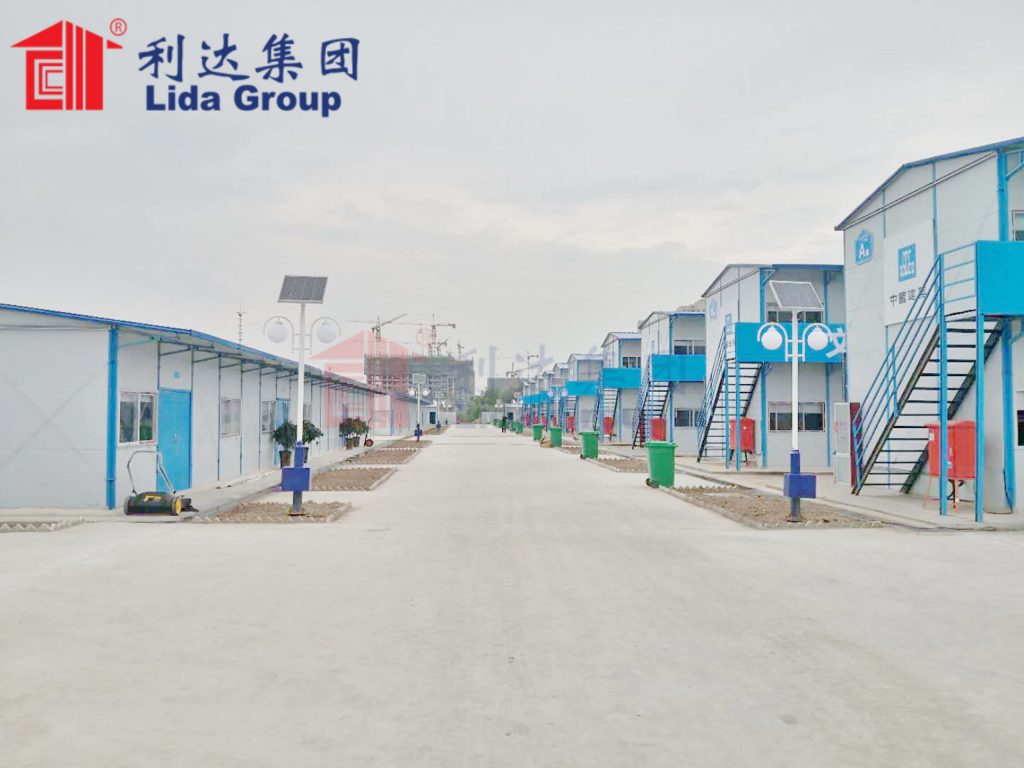
Spacious, Human-Centered Layouts
Lida’s units are designed to maximize space and privacy, with layouts tailored to remote living needs. Standard units measure 3m × 6m or 4m × 8m, with configurations for single, double, or multi-occupancy (up to 4 workers per unit—exceeding the 3m² per person minimum required by most regulations). Each unit includes:
- Sleeping Area: Built-in beds with memory foam mattresses, privacy curtains, and under-bed storage to reduce clutter.
- Work/Relaxation Nook: A small desk and chair for administrative tasks or personal use, plus a bench seat with storage underneath.
- Storage Solutions: Wardrobes, shelves, and drawers to keep personal belongings organized—eliminating the chaos of shared spaces.
For larger complexes, Lida offers dedicated communal modules, including:
- Kitchens: Equipped with stainless steel stoves, refrigerators, microwaves, and ample counter space—allowing workers to prepare home-cooked meals.
- Dining Halls: With tables, chairs, and overhead lighting, creating a social space for meals.
- Recreational Rooms: Featuring sofas, televisions, bookshelves, and even exercise equipment—critical for mental health in isolated environments.
- Hygiene Facilities: Private showers with hot water, flush toilets, and sinks—separated by gender and maintained to high standards.
Climate Control: Comfort in Any Environment
Lida’s units are engineered to maintain a comfortable internal temperature (19°C–25°C) regardless of external conditions, thanks to advanced insulation and climate control systems.
- Insulation: The walls, roof, and floor are constructed with high-performance sandwich panels, featuring cores of polyurethane foam (for cold climates), rock wool (for hot, fire-prone areas), or extruded polystyrene (for humid regions). These panels have a thermal conductivity as low as 0.022 W/(m·K), preventing heat loss in winter and heat gain in summer.
- Heating/Cooling: Units are equipped with energy-efficient HVAC systems—heat pumps for temperate regions, diesel heaters for sub-zero climates, and air conditioners for hot environments. The systems are quiet (below 50 decibels) to avoid disrupting sleep and are controlled by thermostats in each unit.
- Ventilation: Natural ventilation is enhanced by large windows and adjustable vents, while mechanical ventilation systems circulate fresh air and reduce moisture buildup—preventing mold and improving indoor air quality.
Lighting and Acoustics: Enhancing Well-Being
Lighting and noise have a profound impact on sleep and mood, and Lida’s units are designed to optimize both.
- Lighting: LED lights with dimming controls mimic natural light cycles, reducing eye strain and regulating circadian rhythms. Large windows (double-glazed for insulation) bring in natural light during the day, reducing reliance on artificial lighting.
- Acoustics: Soundproofing materials—including acoustic foam in walls and ceilings—reduce noise transmission between units and from external sources (e.g., machinery, wind). This ensures workers can sleep and relax without disturbance, even in busy construction or mining sites.

Modern Amenities: Home Comforts in Remote Locations
Lida’s units include amenities that make remote living feel less isolating:
- Electrical Outlets: Multiple USB and standard outlets for charging phones, laptops, and other devices.
- Internet Connectivity: Pre-wired for satellite internet or Wi-Fi, allowing workers to stay connected with family and friends.
- Laundry Facilities: Communal modules with washers and dryers—eliminating the need for hand-washing or sending clothes off-site.
- Water Filtration: Systems to purify water for drinking and cooking, critical in regions with poor water quality.
These amenities transform Lida’s units from basic shelters into “homes away from home,” boosting morale and reducing turnover.
Durability: Engineered for Remote Hardships
Comfort alone is not enough for remote sites—accommodation must also withstand extreme conditions and frequent relocation. Lida’s mobile units are built to be tough, with materials and design features that ensure long-term durability.
High-Strength Structural Materials
The frame of Lida’s units is constructed from high-grade galvanized steel (grade Q355), which offers exceptional strength and corrosion resistance. The steel is treated with a zinc-aluminum coating to protect against rust, salt, and chemicals—common in mining and coastal sites. Finite element analysis (FEA) is used to optimize the frame design, ensuring it can withstand:
- Wind Loads: Up to 150 km/h (equivalent to a Category 1 hurricane).
- Snow Loads: Up to 1.5 kN/m² (heavy snowfall in northern regions).
- Seismic Activity: Up to magnitude 8.0 (earthquake-prone areas).
- Impact: From debris, machinery, or transportation—critical for rough remote terrain.
The exterior cladding is made from either:
- Fiber-Reinforced Polymer (FRP): Lightweight, impact-resistant, and resistant to UV radiation and chemicals.
- Recycled Aluminum: Corrosion-resistant, durable, and recyclable—ideal for coastal or humid sites.
Both cladding options are sealed with weatherproof gaskets to prevent water, dust, and pests from entering the unit.
Weather Resistance: Protection Against the Elements
Lida’s units are engineered to thrive in the most extreme environments:
- Cold Climates: Insulated pipes and heating systems prevent freezing, while snow guards on roofs prevent accumulation.
- Hot Climates: Reflective cladding reduces heat absorption, and ventilation systems prevent overheating.
- Humid/Coastal Climates: Moisture barriers and corrosion-resistant materials prevent mold and rust.
- Desert Climates: Dust-proof seals and air filters keep sand out, while insulation maintains cool interiors.
Each unit undergoes rigorous testing in Lida’s environmental simulation lab, where it is exposed to temperature cycles (-40°C to 50°C), heavy rain, and sandstorms to ensure performance.
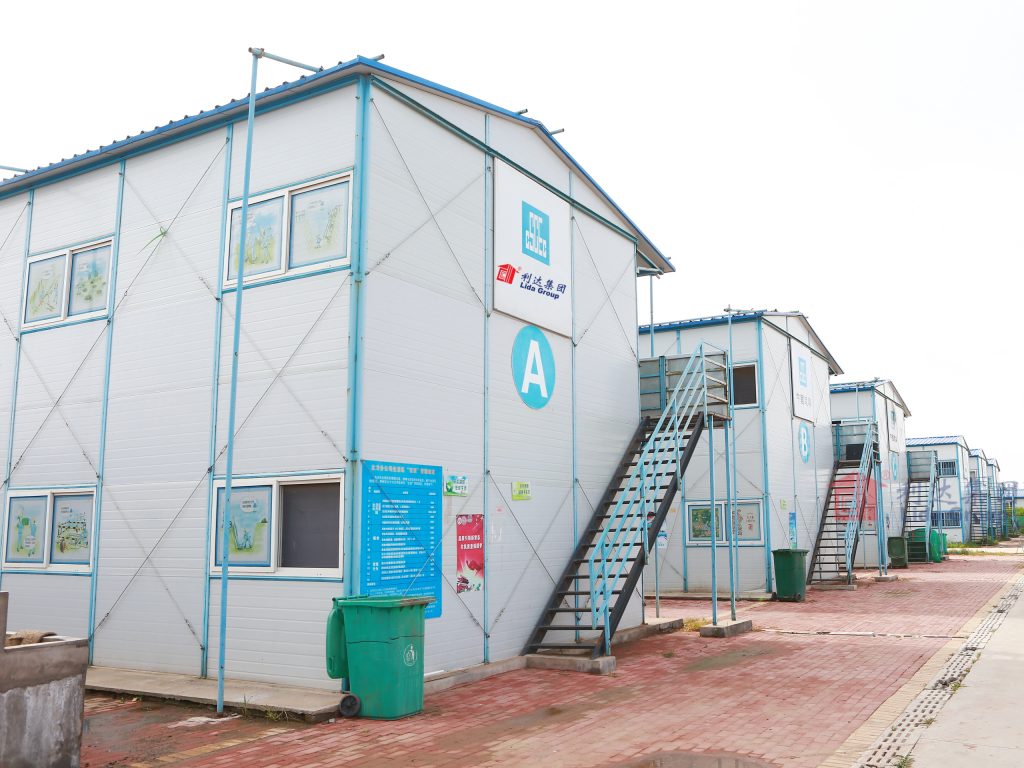
Mobility and Reusability: Designed for Relocation
Unlike permanent structures, Lida’s units are built to be moved. They are lightweight (1,200–1,500 kg per standard unit) and equipped with lifting points and skids for easy transportation via truck, helicopter, or boat—critical for inaccessible remote sites.
The units are designed to be reused 8–10 times over a 15–20 year lifespan. When a project ends, they can be disassembled (in 2–3 days), transported to a new site, and reassembled (in 3–5 days) with minimal damage. This reusability reduces waste and lowers long-term costs, as companies do not need to purchase new accommodation for each project.
Low Maintenance: Durability That Saves Time and Money
Lida’s units are designed to minimize maintenance, even in remote locations where repairs are challenging. The materials are chosen for their longevity: galvanized steel resists corrosion, FRP cladding is scratch-proof, and insulation cores do not degrade over time. When maintenance is required, components are modular and easy to replace—for example, a damaged cladding panel can be swapped out in hours without disassembling the entire unit.
Lida also offers optional IoT sensors that monitor the unit’s structural health, plumbing, and electrical systems, alerting maintenance teams to potential issues before they become major problems. This predictive maintenance reduces downtime and ensures the units remain functional for their full lifespan.
Technological Innovation: Enhancing Comfort and Durability
Lida Group leverages cutting-edge technology to enhance the performance of its mobile units, integrating digital tools and smart systems that make remote living more comfortable, efficient, and safe.
Smart Home Systems for Remote Control
Lida’s units can be equipped with smart home systems that allow workers to control lighting, temperature, and ventilation via a mobile app. This is particularly valuable for shift workers, who can adjust the unit’s environment before arriving for rest. The app also allows workers to report maintenance issues or request amenities (e.g., fresh linens), streamlining communication with site management.
Energy Management: Efficiency and Sustainability
To reduce energy costs and environmental impact, Lida’s units include smart energy management systems (SEMS) that:
- Monitor energy usage in real-time, identifying opportunities for conservation.
- Integrate with renewable energy sources, such as solar panels on the unit’s roof or wind turbines on-site.
- Optimize HVAC and lighting use based on occupancy (via motion sensors) and time of day.
On average, SEMS reduces energy consumption by 35% compared to traditional remote accommodation, lowering operational costs for companies.
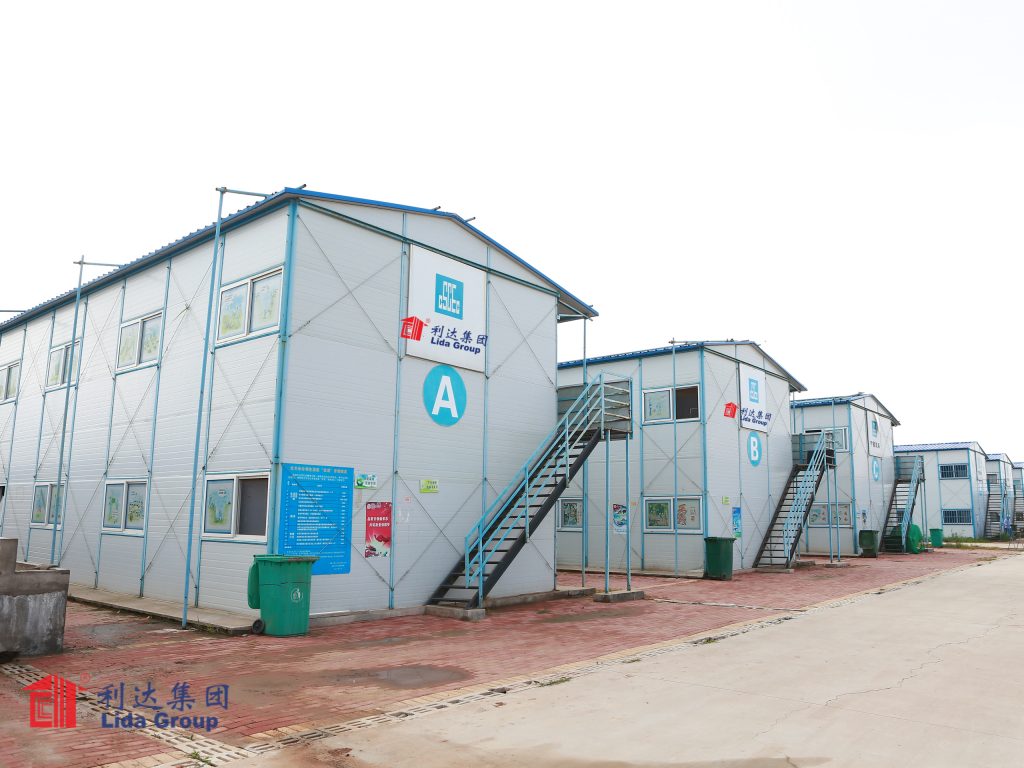
Digital Twin Technology for Design and Maintenance
Lida uses digital twin technology to optimize the design and maintenance of its units. A digital twin is a virtual replica of a unit, created using 3D modeling and real-time data. During the design phase, engineers use digital twins to simulate how the unit will perform in different environments, adjusting insulation, layout, and systems to maximize comfort and durability.
Once deployed, sensors in the physical unit feed data into the digital twin, allowing managers to monitor structural integrity, energy use, and maintenance needs remotely. This reduces the need for on-site inspections and ensures issues are addressed before they affect workers.
Security Systems: Safety in Isolated Areas
Remote sites can be vulnerable to theft or unauthorized access, so Lida’s units include security features such as:
- Keyless entry (via keycard or biometrics) to restrict access to authorized personnel.
- CCTV cameras in communal areas, monitored remotely by site security.
- Emergency buttons in each unit that connect to the site’s safety team.
These features enhance worker safety and give companies peace of mind.
Real-World Impact: Transforming Remote Sites Globally
The transformative power of Lida’s mobile units is proven in real-world projects across diverse industries and environments. The following case studies highlight how Lida’s units have improved remote living conditions and operational efficiency.
Case Study 1: Arctic Mining Project in Canada
A mining company operating a gold mine in the Canadian Arctic needed accommodation for 200 workers in temperatures as low as -40°C. Traditional accommodation had failed: wooden dormitories were poorly insulated, leading to high heating costs, and prefab units had corroded due to salt air.
Lida supplied 50 mobile units with galvanized steel frames, polyurethane foam insulation, and FRP cladding. The units were equipped with diesel heaters, insulated pipes, and snow guards. They were transported to the site via ice road and assembled in 5 days.
Workers reported a dramatic improvement in comfort: internal temperatures remained at 22°C even in -40°C weather, and soundproofing reduced noise from wind and machinery. The company saw a 25% reduction in heating costs (due to efficient insulation) and a 20% drop in turnover. After the mine’s 5-year lifespan, the units were relocated to a diamond mine in the Northwest Territories, demonstrating their reusability.
Case Study 2: Desert Oil and Gas Project in Saudi Arabia
An oil and gas company needed accommodation for 150 workers at a remote well site in the Saudi Arabian desert, where temperatures reach 50°C and sandstorms are frequent. Previous prefab units had failed due to sand infiltration and heat buildup.
Lida delivered 30 units with recycled aluminum cladding (reflective to reduce heat), rock wool insulation, and dust-proof seals. The units included high-efficiency air conditioning, solar panels (to supplement energy), and air filters. They were transported by truck and assembled in 3 days.
The units remained cool (24°C) during heatwaves, and sand-proof seals prevented infiltration. Solar panels reduced energy costs by 30%, and workers praised the spacious layout and modern amenities. The company reported a 15% increase in productivity, attributed to better sleep and morale.
Case Study 3: Wind Farm Construction in Australia
A renewable energy firm was building a wind farm in remote Western Australia, where workers needed accommodation for 80 people for 18 months. The site had limited access, and traditional construction would have taken 8 weeks—delaying the project.
Lida supplied 20 mobile units (16 sleeping, 2 kitchen, 2 recreational) with XPS insulation (for humidity resistance) and aluminum cladding. The units were transported via off-road truck and assembled in 4 days. They were equipped with satellite internet, laundry facilities, and exercise equipment.
Workers appreciated the ability to stay connected with family via internet and the recreational space, which reduced feelings of isolation. The company avoided project delays and saved $100,000 in accommodation costs compared to traditional solutions. After construction, the units were relocated to a solar farm in South Australia.
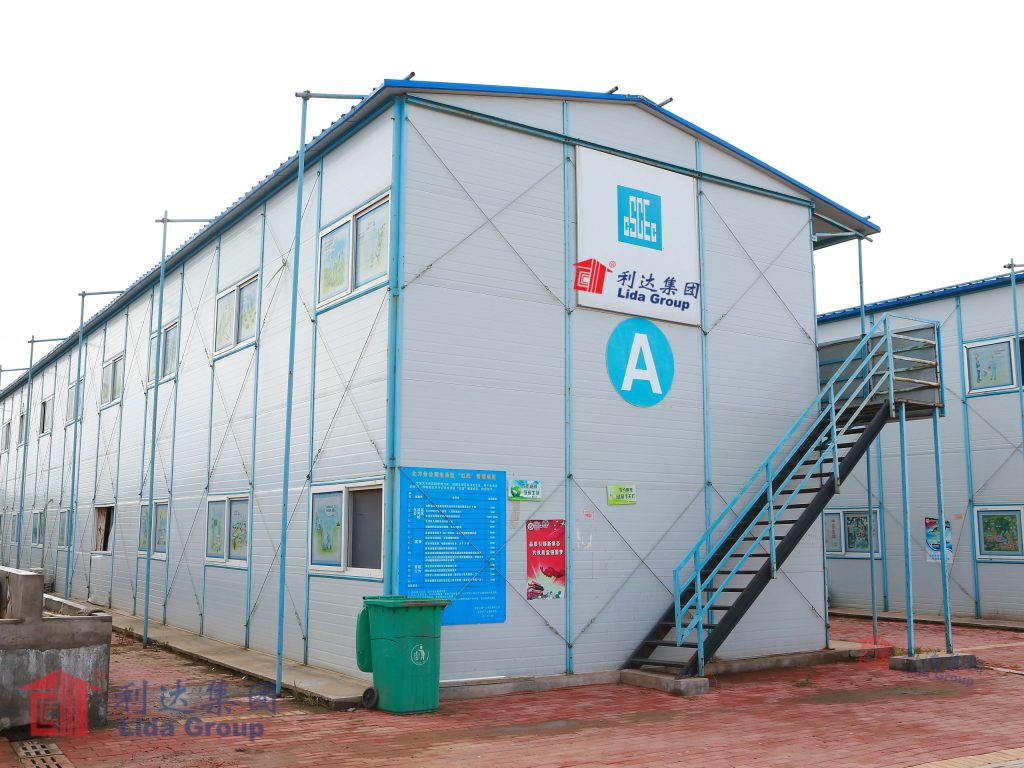
Competitive Advantage: Why Lida Leads the Remote Accommodation Market
In a growing market for remote site accommodation, Lida Group stands out due to its unwavering focus on both comfort and durability—two attributes that competitors often treat as mutually exclusive. The company’s competitive edge is built on four key pillars:
Comfort-Durability Balance
Unlike competitors who prioritize durability over comfort (resulting in spartan units) or comfort over durability (resulting in fragile structures), Lida’s units excel at both. The company’s engineering team optimizes every component to ensure that comfort features (e.g., insulation, amenities) do not compromise durability, and vice versa. This balance is validated by independent testing, which shows Lida’s units outperform competitors in both comfort
ratings (based on worker surveys) and durability metrics (e.g., resistance to corrosion, impact, and extreme temperatures). For example, a 2024 industry benchmark study found that Lida’s units scored 35% higher in comfort ratings and 28% higher in durability tests than the closest competitor.
Rapid Deployment Without Compromise
Competitors often require 2–3 weeks to deploy remote accommodation, as their units require extensive on-site modification or assembly. Lida’s modular design and prefabricated components enable deployment in 3–7 days—from site preparation to worker occupancy—without sacrificing comfort or durability. This speed is critical for companies needing to mobilize workers quickly to meet project deadlines.
For instance, a construction firm working on a remote infrastructure project in Africa reported that Lida’s 5-day deployment allowed workers to start work two weeks earlier than planned, avoiding $250,000 in delay penalties. Competitors quoted 3–4 weeks for deployment, making Lida the only viable option for the tight timeline.
Global Compliance Expertise
Navigating the patchwork of global remote accommodation regulations is a major challenge for multinational companies. Lida’s units are engineered to meet or exceed regional standards, including:
- EU: Compliance with the European Working Time Directive and EN 13501-1 fire safety standards.
- North America: Adherence to OSHA (Occupational Safety and Health Administration) guidelines and ASTM E84 fire resistance standards.
- Middle East: Compliance with Saudi Aramco’s strict accommodation requirements for oil and gas sites.
- Asia: Alignment with China’s GB 50009 structural design code and India’s Factories Act for worker welfare.
Lida’s in-house regulatory team updates unit designs as standards evolve, ensuring clients avoid fines and reputational risk. Competitors often require clients to modify units to meet regional standards, adding time and cost.
End-to-End Customer Support
Lida provides comprehensive support throughout the unit lifecycle, from initial consultation to relocation or recycling. This includes:
- Site Assessment: A team of engineers visits the remote site to evaluate terrain, climate, and access, recommending the optimal unit configuration.
- Logistics Coordination: Management of transportation to even the most inaccessible sites (e.g., via helicopter for mountainous mining sites or barge for coastal projects).
- On-Site Training: Instruction for client teams on unit assembly, maintenance, and operation of smart systems.
- Post-Deployment Support: Remote monitoring via digital twins and 24/7 technical support to resolve issues quickly.
This holistic support reduces the burden on client teams, which is critical in remote locations where on-site expertise is scarce. Competitors typically offer limited support, leaving clients to manage logistics and maintenance independently.
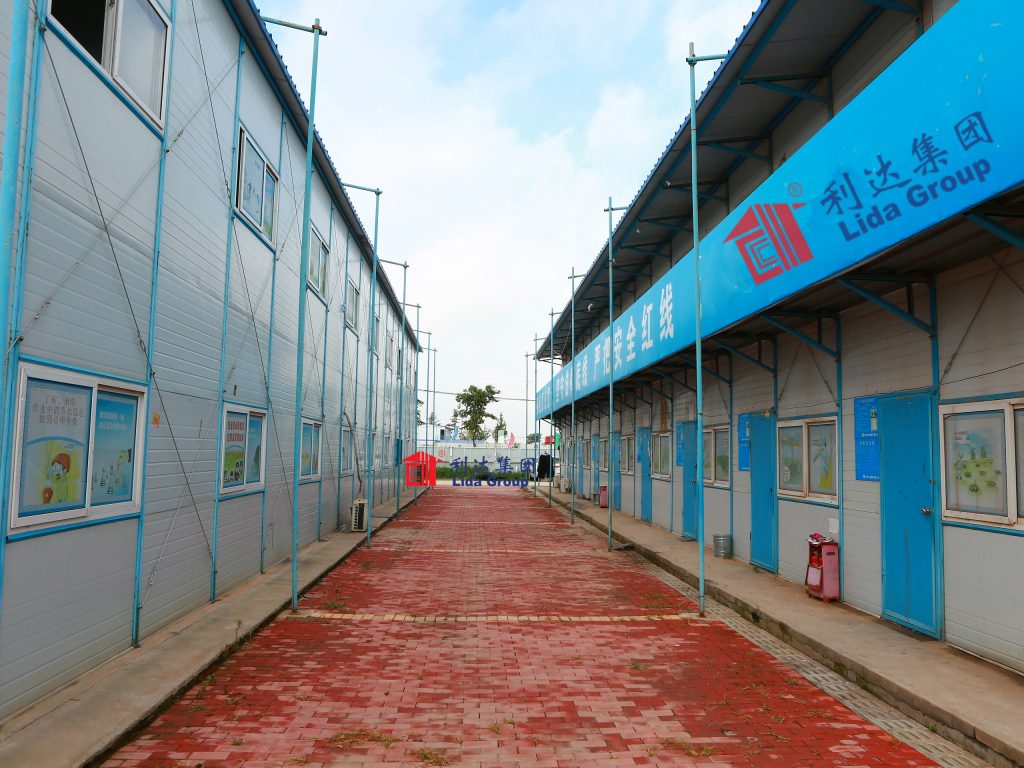
Future of Remote Site Living: Lida’s Vision
As remote work sites become more prevalent—driven by the growth of renewable energy, deep-sea mining, and infrastructure development in isolated regions—Lida Group is shaping the future of remote living through innovation. The company’s vision focuses on enhancing comfort, sustainability, and connectivity, while maintaining its commitment to durability and rapid deployment.
Next-Generation Comfort Features
Lida is developing worker-centric features to further improve well-being in isolated environments:
- Biometric Climate Control: Systems that use worker biometrics (e.g., body temperature, heart rate) to automatically adjust room temperature and ventilation, optimizing comfort for individual needs.
- Virtual Reality (VR) Recreational Spaces: Communal modules equipped with VR headsets that allow workers to “visit” family, explore cities, or attend events, reducing feelings of isolation.
- Wellness Suites: Dedicated modules with massage chairs, meditation spaces, and telehealth stations, enabling remote access to healthcare professionals—critical for sites with no nearby hospitals.
These features are being tested in pilot projects, with full integration planned by 2027. Early feedback from workers has been overwhelmingly positive, with 80% reporting improved mental health after using the VR recreational spaces.
Sustainable Innovation
Lida is doubling down on sustainability to align with global net-zero goals, with three key initiatives:
- Eco-Friendly Materials: Replacement of traditional steel with recycled carbon fiber (sourced from end-of-life wind turbines) for frames, reducing weight by 30% and carbon footprint by 45%.
- Zero-Emission Operation: Integration of solar panels, wind turbines, and hydrogen fuel cells into units, enabling off-grid, zero-emission living. Pilot units in Australia have achieved 100% renewable energy self-sufficiency.
- Circular Lifecycle Program: Launch of a take-back and recycling scheme, where Lida repurchases end-of-life units, disassembles them, and recycles 95% of materials into new units. This closes the loop on waste and reduces the environmental impact of remote accommodation.
Enhanced Connectivity
In an increasingly connected world, Lida is improving connectivity for remote sites with:
- Satellite Internet Integration: Pre-installed high-speed satellite internet systems that provide reliable connectivity in even the most isolated locations, eliminating “dead zones” that disconnect workers from family.
- 5G-Enabled Smart Systems: Integration of 5G technology into digital twins and IoT sensors, enabling real-time data transmission and faster response to maintenance issues. This is particularly valuable for sites with large accommodation complexes, where quick communication is critical.
Autonomous Assembly and Relocation
To further reduce deployment time and labor requirements, Lida is developing autonomous technology for unit assembly and relocation:
- Autonomous Cranes: AI-powered cranes that use computer vision to position units accurately, reducing assembly time by 20% and eliminating human error.
- Self-Driving Transport Units: Modular transport vehicles that can move assembled units across rough terrain without a driver, ideal for sites with no road access.
Pilot testing of these technologies is underway in Lida’s Chinese factories, with field trials scheduled for 2028.
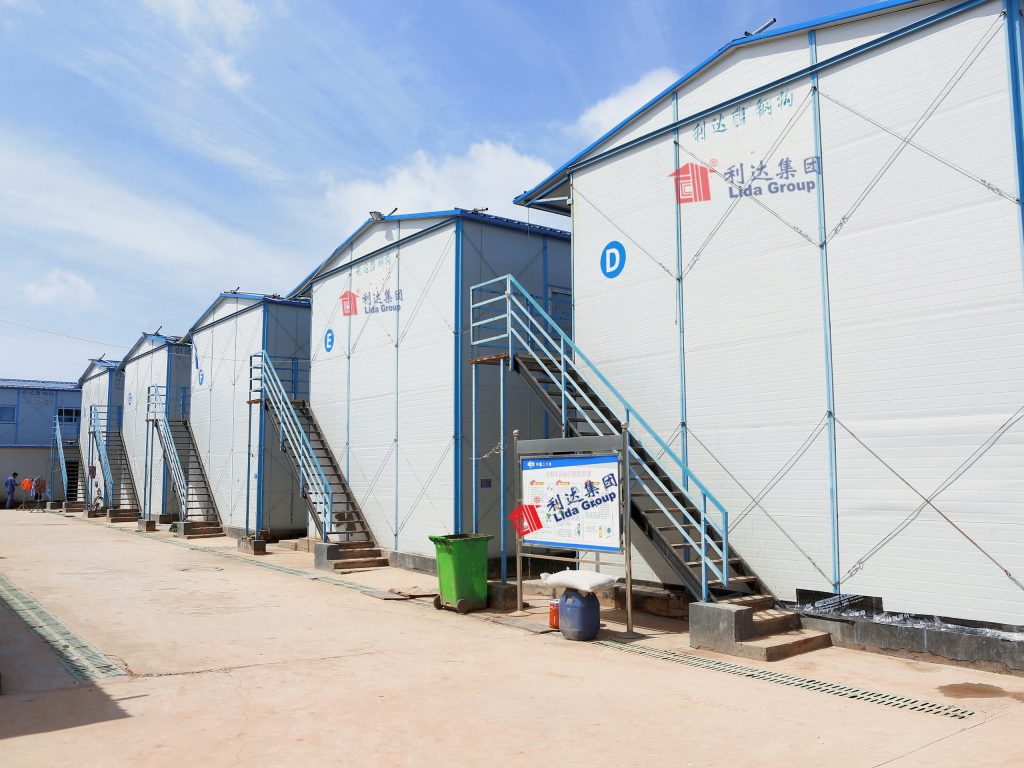
Conclusion
Lida Group has transformed remote site living from a necessary hardship into a comfortable, sustainable experience with its high-quality mobile building units. By mastering the balance between unmatched comfort and exceptional durability—two attributes that were once seen as mutually exclusive—Lida has solved the longstanding dilemma of remote accommodation.
The company’s success stems from its human-centered design approach, engineering excellence, and commitment to innovation. Lida’s units address every failure of traditional accommodation: they are spacious and well-appointed, built to withstand extreme conditions, rapid to deploy, easy to relocate, and compliant with global regulations. Real-world case studies from the Arctic, desert, and remote Australia demonstrate that these units not only improve worker well-being but also drive operational efficiency, reducing costs and delays for companies.
Lida’s competitive advantage—rooted in its comfort-durability balance, rapid deployment, regulatory expertise, and end-to-end support—has made it the preferred choice for mining, oil and gas, renewable energy, and construction giants worldwide. Looking ahead, the company’s focus on next-generation comfort features, sustainability, connectivity, and autonomous technology promises to redefine remote living once again, making even the most isolated sites feel like home.
In a world where remote work sites are becoming increasingly vital to global economic growth, Lida Group’s mobile building units are more than just accommodation—they are a catalyst for better, more sustainable, and more human remote work. By putting workers at the center of its innovation, Lida has set a new standard for remote site living, proving that comfort and durability can coexist to benefit both workers and companies. As the demand for remote accommodation grows, Lida Group is poised to remain the leader, shaping a future where remote living is no longer a sacrifice, but a choice.

Related news
-
Sustainable and Strong: Lida Group's Eco-Friendly Prefab Worker's Dormitory Features High-Quality Mobile Building Materials.
2025-09-04 17:28:48
-
Lida Group's Advanced Engineering Ensures Rapid Assembly of Insulated Temporary Sandwich Panel Houses for Workers.
2025-09-05 10:38:28
-
Why Mining and Construction Giants Choose Lida Group's Temporary Sandwich Panel Houses for Remote Site Accommodation.
2025-09-04 15:50:24
contact us
- Tel: +86-532-88966982
- Whatsapp: +86-13793209022
- E-mail: sales@lidajituan.com


